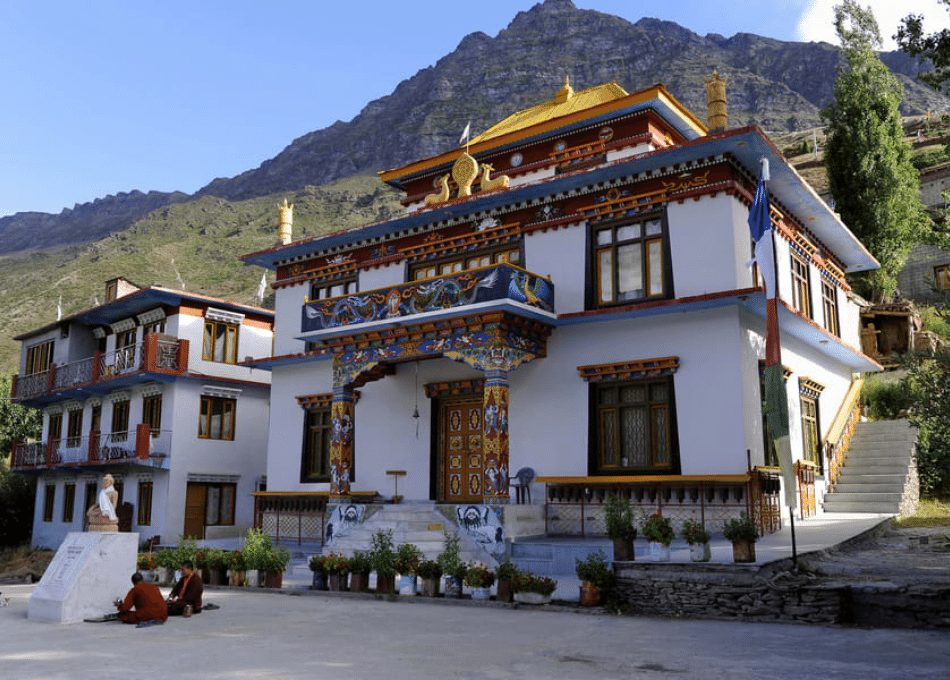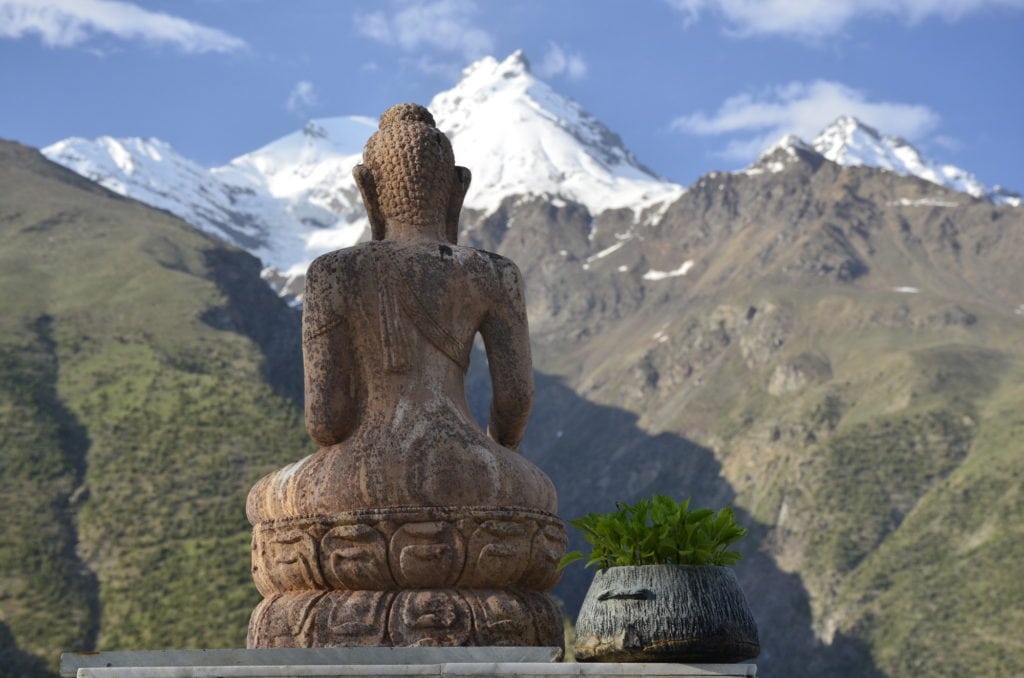Nestled high in the Himalayan mountains, the Kardang Monastery stands as a beacon of spirituality and cultural heritage in the Lahaul and Spiti region of Himachal Pradesh, India. This ancient Buddhist monastery, perched atop a rocky ridge, offers a serene escape from the chaotic modern world. With its rich history, architectural beauty, and spiritual significance, Kardang Monastery is a testament to the enduring presence of Buddhism in this remote and arid landscape. It is also a popular place to visit in Keylong, attracting travelers seeking a deeper connection with spirituality and a glimpse into the region's rich cultural history.
Historical Background
Kardang Monastery, also known as Kar Tang Gompa, is one of the most significant monastic institutions in Lahaul and Spiti. It has a history that dates back over 900 years, making it one of the oldest monasteries in the region. The monastery was founded in the 12th century by Lama Norbu Dorje, a disciple of the famous Tibetan scholar and translator, Rinchen Zangpo.
Lama Norbu Dorje chose the site for the monastery with great care. Its strategic location high on a ridge overlooking the confluence of the Chandra and Bhaga rivers offers stunning panoramic views of the surrounding mountains and valleys. This location was not only ideal for meditation and spiritual practice but also provided a strategic vantage point for defense during turbulent times.
Architectural Marvel
One of the striking features of the Kardang Monastery is its architectural splendor. The complex consists of a main temple, several prayer halls, living quarters for monks, and a library. The main temple, known as the Du-Khang, is a masterpiece of Tibetan architecture. It is adorned with intricate woodwork, colorful frescoes, and ancient thangka paintings.
The walls of the Du-Khang are covered with beautiful murals that depict scenes from the life of Lord Buddha, stories from Buddhist scriptures, and various deities. The monastery's architecture is a blend of Tibetan and Indian styles, reflecting the cultural influences that have shaped the region over the centuries.
The roof of the main temple is a stunning example of the traditional pagoda-style design, with multiple tiers and beautifully carved wooden eaves. The monastery's ancient scriptures and artifacts are housed in a well-preserved library, where visitors can gain insights into the rich Buddhist heritage of the region.
Spiritual Significance
Kardang Monastery serves as a center for spiritual and religious activities in the Lahaul and Spiti Valley. It follows the Drukpa Kagyu tradition of Tibetan Buddhism, and monks living in the monastery adhere to a strict code of conduct and engage in daily rituals and prayers.
One of the most important events in the monastery's calendar is the annual Gustor Festival. During this festival, which usually takes place in July, the monks perform masked dances and sacred rituals. These colorful and symbolic dances are a way of conveying Buddhist teachings to the local community and to visitors.
The monastery also plays a vital role in educating young monks and preserving traditional Buddhist knowledge. Monastic education in Kardang Monastery covers a wide range of subjects, including Buddhist philosophy, meditation, and rituals. This educational system is integral to the survival of Tibetan Buddhism in the region and the continuation of its unique cultural traditions.
The Monastic Community
The Kardang Monastery is home to a community of Buddhist monks who follow a strict regimen of daily life. The monks engage in meditation, prayer, and study, dedicating their lives to the pursuit of spiritual enlightenment and the well-being of all sentient beings.
Monastic life in Kardang Monastery is not limited to spiritual pursuits alone. The monks are actively involved in the welfare of the local community. They provide educational support, healthcare, and humanitarian assistance to the people of Lahaul and Spiti, which further strengthens their connection to the region.
Challenges and Resilience
Despite its historical significance and spiritual importance, Kardang Monastery has faced various challenges over the centuries. The region's extreme climate, with harsh winters and heavy snowfall, poses a considerable challenge to the maintenance of the monastery's buildings.
Additionally, the isolation of the region has made it difficult for the monastery to access resources and expertise for restoration and maintenance. However, the local community, as well as external organizations and individuals, have rallied to support the preservation and upkeep of this cultural treasure.
The people of Lahaul and Spiti, along with the monks of Kardang Monastery, have displayed remarkable resilience and resourcefulness in sustaining the monastery and its traditions. Their efforts in restoration and maintenance are a testament to the importance of preserving the region's cultural heritage.
Visiting Kardang Monastery
Visiting Kardang Monastery is a unique experience, offering travelers a glimpse into a world where spirituality and culture are intricately intertwined. The tranquility and serenity of the surroundings make it an ideal place for meditation and self-reflection.
While visiting, it's essential to respect the monastery's rules and customs. Modest clothing and a respectful attitude are expected from all visitors. Engaging in photography and exploring the rich history and culture of the region is also encouraged.
Conclusion
The Kardang Monastery, perched high in the Himalayas of Lahaul and Spiti, stands as a living testament to the enduring spirit of Buddhism and the rich cultural heritage of the region. With its ancient history, breathtaking architecture, spiritual significance, and the resilience of its community, Kardang Monastery continues to be a beacon of enlightenment in the remote and arid landscapes of Himachal Pradesh.
In an ever-changing world, the Kardang Monastery remains a place of stability and spiritual nourishment for both the local community and those who visit. Its existence serves as a reminder of the profound cultural and spiritual legacy that continues to thrive in the heart of the Himalayas.




No comments:
Post a Comment